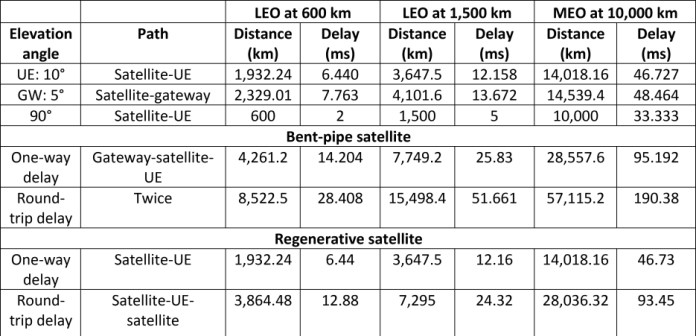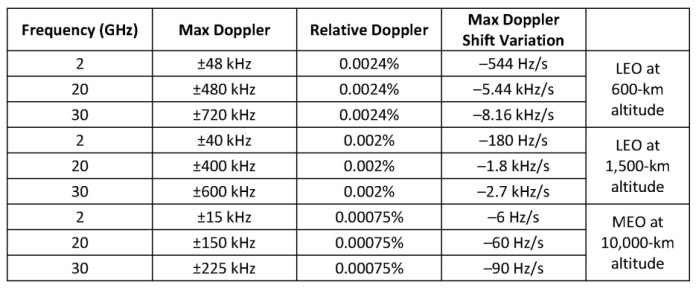Since the invention of mobile phones, cellular networks have relied on terrestrial infrastructures. For the first time in history, 5G technology can potentially migrate parts of the mobile network infrastructure to space through non-terrestrial networks (NTNs). Satellites will be able to transmit and process data in place of terrestrial base stations.
NTNs will significantly improve mobile network coverage and connection continuity compared with conventional terrestrial network architectures and provide a disaster-proof solution for emergency communications. From an environmental and energy-efficiency standpoint, NTNs also bring clear benefits. This article will walk through the technical challenges of NTNs, explore the features coming with 3rd Generation Partnership Project (3GPP) Release 17 and future expansions and discuss some of the new use cases enabled by NTNs.
NTN architectures defined by 3GPP
First, for satellites to participate in mobile network operations, there must be a direct connection between satellites and ground-based gateways. Figure 1 shows how a terrestrial network can access its core network through aerial nodes. In this case, satellites act as jump stations from one ground station to another, forming a bent-pipe link in between the user equipment (UE) and satellite gateway.
There is no data processing in the satellites for this architecture. Therefore, 3GPP Release 17 has defined this architecture as the transparent NTN radio access network (RAN) architecture. It is the most straightforward architecture to achieve NTN functions for most use cases. Release 17 only supports this transparent architecture.
There are two other architectures defined in Release 17, but they are not supported yet. One of these architectures has a full 5G base station or gNB built into the satellite, as shown in Figure 2. The other architecture has only a distributed unit (DU) built into the satellite, as shown in Figure 3. These two architectures allow data processing in satellites, reducing propagation delay by half compared with the transparent architecture. However, because these two architectures require unique components, they are more challenging to implement.

Figure 2: Regenerative-satellite–based NG-RAN architecture with gNB on board (Source: Keysight Technologies)

Figure 3: Regenerative-satellite–based NG-RAN architecture with gNB-DU on board (Source: Keysight Technologies)
Orbit types
Understanding the different types of orbits is an essential part of understanding NTNs. Figure 4 illustrates all orbit types. The first one is the geostationary orbit (GEO). This type of satellite rotates at the same angular speed as Earth. The satellite remains stationary over a reference point on the ground. GEO has a unique distance relative to the ground, which is 35,786 km. The main benefit of using GEO orbits is that a single satellite can provide continuous coverage for a large area.
Non-geostationary (NGSO) satellites include low-Earth orbits (LEOs) (300 to 2,000 km), medium-Earth orbits (MEOs) (7,000 to 25,000 km) and highly elliptical orbits (HEOs) (1,000 to 35,756 km). These satellites are not stationary with respect to Earth.
The altitude of LEO satellites is much lower than that of GEO orbits, regardless of the satellite architecture. As a result, the propagation delay of GEO satellites is about 20× greater than that of LEO orbits. Most commercial satellite applications today use LEO orbits to reduce latency. However, many more satellites are required to provide the same size of coverage and coverage continuity as one GEO satellite.
Key technical challenges
Due to the long distance of signal transmission from space to the ground, the wireless signal suffers from significant signal attenuation. This leads to the first major challenge faced by NTN: propagation delay. Table 1 shows propagation delay values in 3GPP’s Technical Report 38.811.

Table 1: Propagation delay measurements with different satellite altitudes and architectures (Source: 3RD Generation Partnership Project)
Propagation delay is greater as the satellite altitude increases. As mentioned earlier, regenerative satellite architectures can cut propagation delays in half compared with a transparent satellite architecture. The best case is a 6-ms propagation delay, which falls within the 5G latency tolerance range.
Doppler shift is another challenge with NTNs. The radiating signal source is stationary in conventional mobile network base stations. It does not have wavelength shifts relative to the receivers. However, satellites are moving at high speed relative to the observer on the ground. The received signal could have a higher or lower frequency, depending on which direction the satellite is moving. Table 2 shows the Doppler shift in 3GPP’s Technical Report 38.811.

Table 2: Doppler shift measurements with changing operating frequency and satellite altitude (Source: 3RD Generation Partnership Project)
As shown in Table 2, the Doppler shift decreases as the satellite altitude increases. Therefore, LEO satellites suffer from the worst Doppler shift. Currently, like propagation delay, it is not possible to remove the Doppler shift completely. Unlike the propagation delay, sending a reference signal can help the UE adjust the frequency shift.
Recommended
Non-terrestrial networks create testing challenges
3GPP supports NTN features
NTN technology is still at an early stage of development. For it to achieve its full potential, the mobile industry must work closely with the satellite industry to develop features and standards. Release 17 is the first 3GPP release that includes support for NTNs.
As mentioned earlier, 3GPP Release 17 defines three RAN architectures for NTNs but supports only the transparent architecture currently. That includes implicit support for high-altitude platform stations, LEO scenarios, GEO scenarios and all NGSO scenarios with circular orbit at an altitude lower than 600 km. Future 3GPP releases will extend support to other architectures and other orbit scenarios.
To compensate for the Doppler shift, Release 17 supports only time-advance (TA) estimation through UE with a global navigation satellite system (GNSS). It means that UE can only rely on the information they get from GNSS to compute timing and frequency and then adjust the doppler shift. The accuracy of this method can be very low, but it does not require users to upgrade their devices because GNSS is a common function in today’s smart devices. In the future, the network should be able to send reference signals to the UE.
UE will be able to use both GNSS and reference signals to improve the estimation accuracy. This feature will also enhance frequency synchronization between UE and the network.
Using TA estimation from GNSS can also help prevent messages from interfering with one another. Long propagation delays make time synchronization more difficult. The TA estimation calculated from GNSS improves timing information between the satellite and the UE.
Currently, Release 17 only supports broadcasting the satellite’s position along with the delay from the satellite to the ground gateway. In future 3GPP releases, satellites will have more options to broadcast ephemeris and frequency information to improve time synchronization.
Use cases enabled by NTNs
The most significant advantage of NTNs is the opportunity to provide global coverage. NTNs can provide continuous connections to cover Earth’s surface. From users’ standpoint, UE should have a stable network connection if they can see the sky. That means being able to access mobile networks while in remote regions, in rural communities and on ships crossing the ocean. NTNs can be extremely helpful during emergencies in areas where terrestrial networks can be disrupted by technical failures, power outages, floods, earthquakes and wars. These use cases were never possible in the past.
Current terrestrial networks also have difficulty providing continuous connections when users move very fast, such as when UE is in a bullet train or a car driving on a highway. The reason for the unstable connection is the constant handovers between terrestrial base stations. NTNs can provide more stable connections for these use cases because of the broad coverage of each satellite.
Today, cross-ocean ships rely heavily on satellites for communication purposes but cannot access mobile networks when they are out to sea. With NTN technology, these ships or the UE on these ships will be able to access the 5G network through satellites. Integrating these technologies will significantly improve connection speed, increase service types and reduce costs for these ships.
Let’s not forget about the internet of things. NTNs will enable many new IoT applications. First, they will enable autonomous cars to go to any place without network access concerns. NTNs will also enable machine-to-machine applications or industrial IoT—for example, tracking shipping containers or checking the status of machine performance for an oil site in the middle of the ocean. NTN scans send information about the status of machines to the owners. Owners can monitor machine operations and perform tasks or repairs through the 5G network as well.
The integration of satellite networks with 5G networks will provide many helpful use cases to individual and enterprise users. Mobile phones will become truly mobile and connection concerns will become a concern of the past.
However, like any disruptive new technology, NTNs come with many challenges. NTNs need the mobile industry to work closely with the satellite industry from both a technical and business standpoint. This process will take time. The good news is that 3GPP Release 17 has already started supporting NTN features. More features will be introduced and supported in the future. UE manufacturers have already begun working on devices that have satellite capabilities. Ultimately, satellites and terrestrial networks will work together from 5G onward.
About the author
 Xiang Li is an experienced wireless network engineer with a master’s degree in electrical engineering. Currently, Xiang is an industry solution marketing engineer at Keysight Technologies.
Xiang Li is an experienced wireless network engineer with a master’s degree in electrical engineering. Currently, Xiang is an industry solution marketing engineer at Keysight Technologies.
Advertisement







